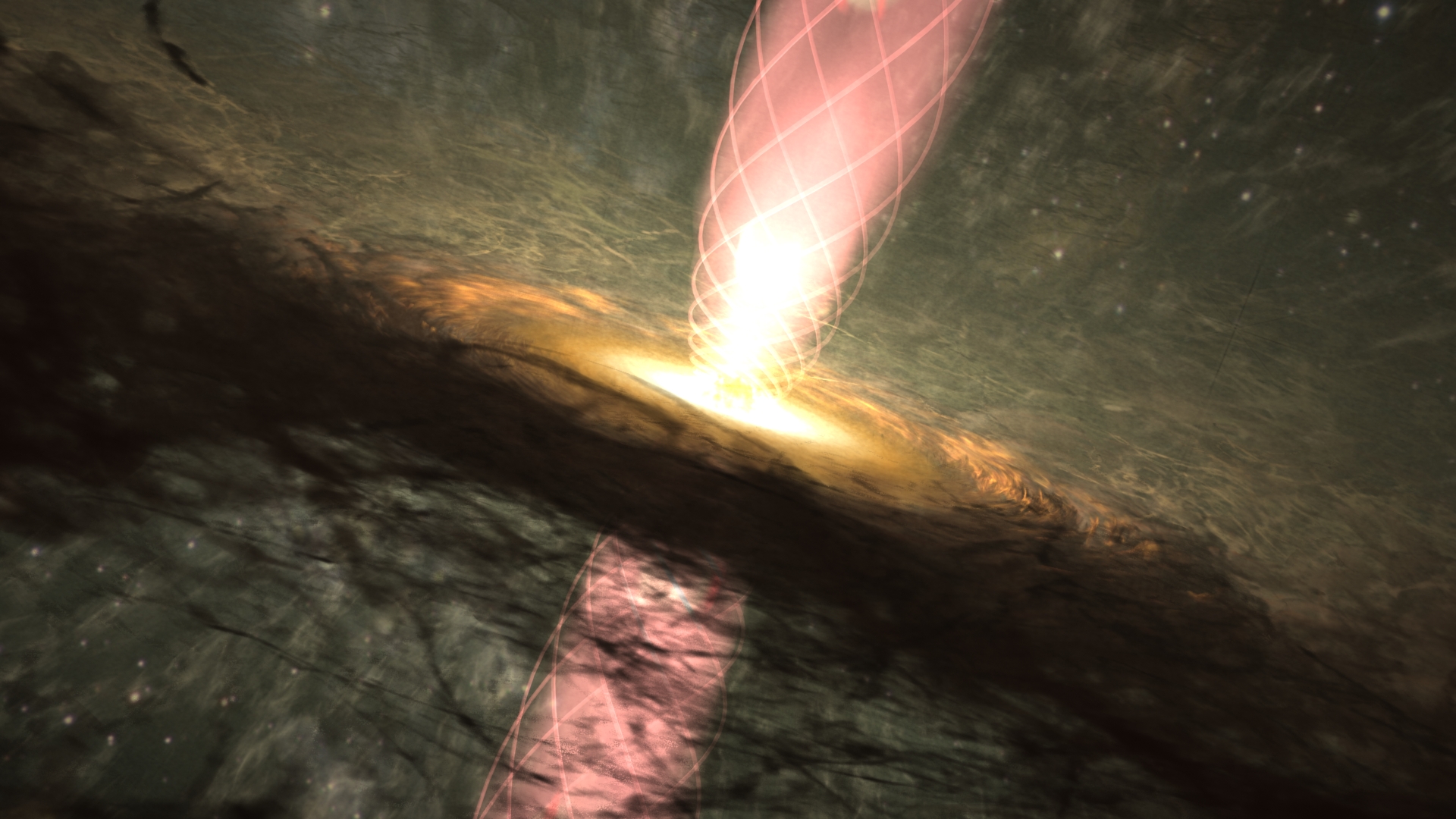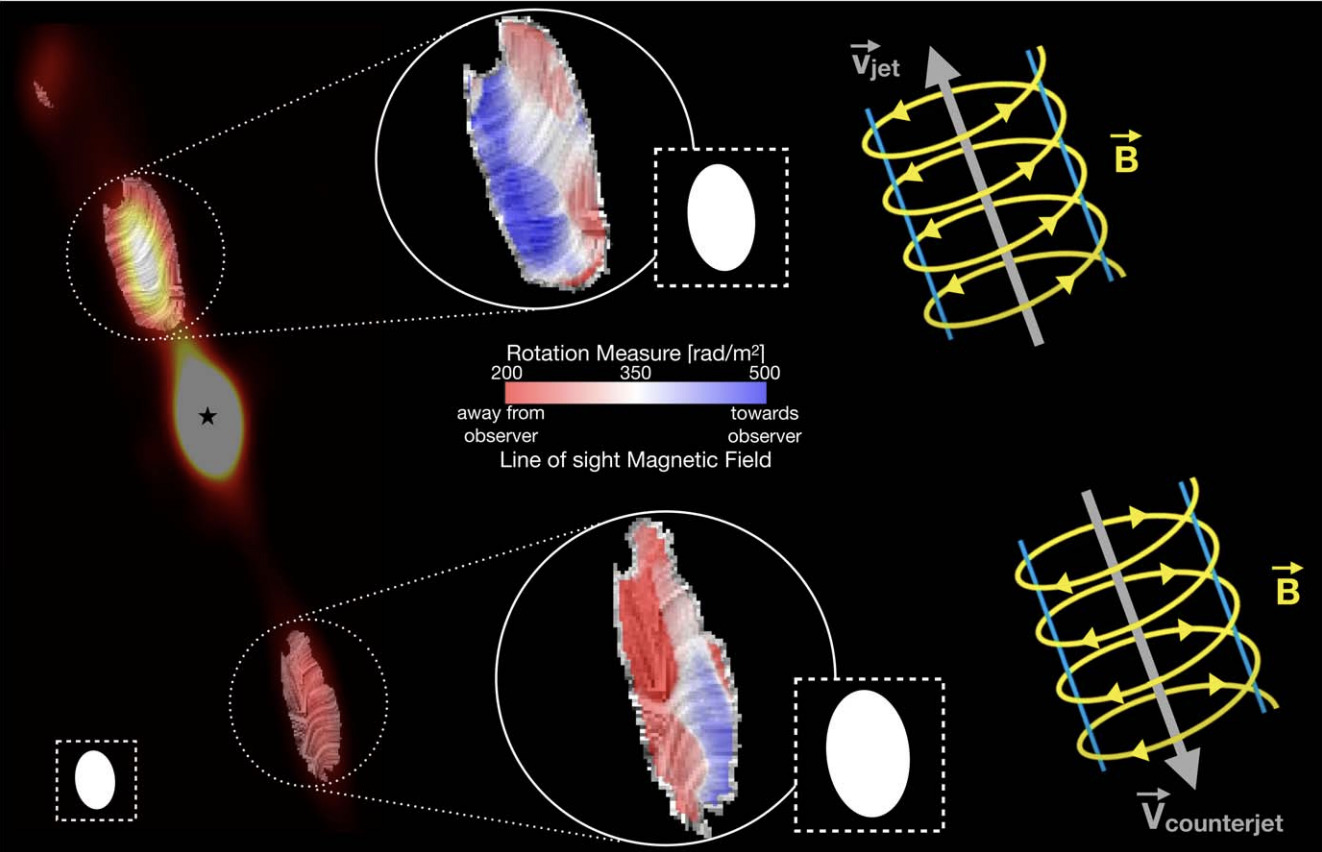A helical–spiral-shaped–magnetic field appears to contain and shape the gas jet coming from the protostar HH 80-81, mirroring structures similar to those observed in much larger jets emanating from supermassive black holes. This is revealed by a new study involving Alice Pasetto, Carlos Carrasco-González and Luis Felipe Rodríguez of the Institute of Radio Astronomy and Astrophysics (IRyA) at UNAM, Campus Morelia.
“This is the first solid evidence that helical magnetic fields can explain astrophysical jets at different scales,” said Adriana Rodríguez-Kamenetzky, of the Institute of Theoretical and Experimental Astronomy (IATE) of the Argentinian National Scientific and Technical Research Council (CONICET) and the National University of Córdoba, Argentina, and leader of the work. This supports the hypothesis that the mechanism that collimates, i.e. that aligns and contains these jets, is universal.
This work as well as two previous related research projects used the Very Large Array (VLA) radio wave observatory in the United States. “Back in 2010, we used the VLA to detect a magnetic field in the gas jet of a young star, but we could not to study its 3D structure,” said Carlos Carrasco-González, leader of that study.
Also, Alice Pasetto led a work in 2021 that identified a double-helix magnetic field in the enormous jet emanating from the supermassive black hole at the center of the M 87 galaxy. The new study reveals a similar structure in the jets of a young star, much smaller in size.
The team measured how much the polarization, that is, the orientation of the radio waves, rotates or twists as it passes through the hot, magnetized gas of the jet, revealing the true orientation of the magnetic field. “For the first time we were able to study the 3D configuration of the magnetic field in a protostellar jet,” said Alice Pasetto.
This finding strongly supports the hypothesis that helical magnetic fields are a universal mechanism for collimating astrophysical jets, regardless of the scale or origin of the jet. This unifying model helps explain how these important cosmic structures are launched into space and evolve.
 Image
Image
Illustration of a protostar driving a bipolar jet within a helical magnetic field. Credit: Wolfgang Steffen, UNAM.
 Figure for astronomers
Figure for astronomers
Results of the Rotation Measure (RM) analysis in the HH80-81 jet. The left image shows the streamline image of the component of the magnetic field parallel to the plane of the sky. In the middle panel, the color scale of the RM indicates the direction of the magnetic field along the line of sight, i.e., red, away from the observer, and blue, towards the observer. The right panel shows a scheme depicting the 3D configuration of the magnetic field, exhibiting a helical topology. Credit: Rodríguez-Kamenetzky et al. 2025, The Astrophysical Journal.
Research paper
Helical Magnetic Field in a Massive Protostellar Jet
A. Rodríguez-Kamenetzky, A. Pasetto, C. Carrasco-González, L. F. Rodríguez, J. L. Gómez, G. Anglada, J. M. Torrelles, N. R. C. Gomes, S. Vig, & J. Martí
The Astrophysical Journal Letters, 978, L31
https://iopscience.iop.org/article/10.3847/2041-8213/ad9b26
Alice Pasetto’s Career
Alice Pasetto obtained her undergraduate degree in astronomy at the University of Bologna, Italy, and her PhD in astronomy and astrophysics at the Max Planck Institute for Radioastronomy and the University of Bonn, Germany. Later, she was a CONACyT Fellow at the Institute of Radioastronomy and Astrophysics (IRyA). She has been a researcher at IRyA since 2024.
She studies radiofrequency polarization in astrophysical objects. In particular, she investigates the polarization associated with the outflows from the central regions of active galactic nuclei (AGN).
Carlos Carrasco-González’s Career
Carlos Carrasco-González obtained his bachelor’s degree in physics from the University of La Laguna, Spain, and his PhD in astrophysics from the University of Granada and the Instituto de Astrofísica de Andalucía (IAA-CSIC) in 2010. Later, he was a postdoctoral researcher at the Max Planck Institute for Radio Astronomy in Bonn, Germany. He has been a researcher at the National Autonomous University of Mexico (UNAM) since 2013.
He uses radio-interferometric observations to study astrophysical jets and protoplanetary disks. In particular, he studies the magnetic field and collimation mechanisms in protostellar jets using the radio-interferometers ALMA (Atacama Large Millimeter Array) and VLA (Very Large Array). He also studies the evolution of dust and planet formation in protoplanetary disks.
Carrasco-González has been head of postgraduate studies in astrophysics at the Institute of Radioastronomy and Astrophysics (IRyA), head of the computing department, and also organizes a summer research program at IRyA for undergraduate students from Mexico and other Latin American countries.
About IRyA, UNAM
The Instituto de Radioastronomía y Astrofísica (IRyA), or Institute for Radioastronomy and Astrophysics is an academic unit at UNAM, Campus Morelia, Mexico. The Institute’s personnel perform high-level and high-impact research in the areas of interstellar medium, star formation, evolved stars, high energy astrophysics, Galactic dynamics and structure, extragalactic astronomy and cosmology. They also contribute to educate high-level human resources through a postgraduate program, and maintain a close relationship with society through diverse outreach and science communication programs.
If you are interested in our Institute, visit the English version of our webpage, www.irya.unam.mx/web/en
Media contact:
Dr. René A. Ortega Minakata
Outreach and Science Communication
IRyA UNAM Campus Morelia
Text: IRyA UNAM, based on the note by NRAO:
https://public.nrao.edu/news/helical-magnetic-fields-a-universal-mechanism-for-jet-collimation/




